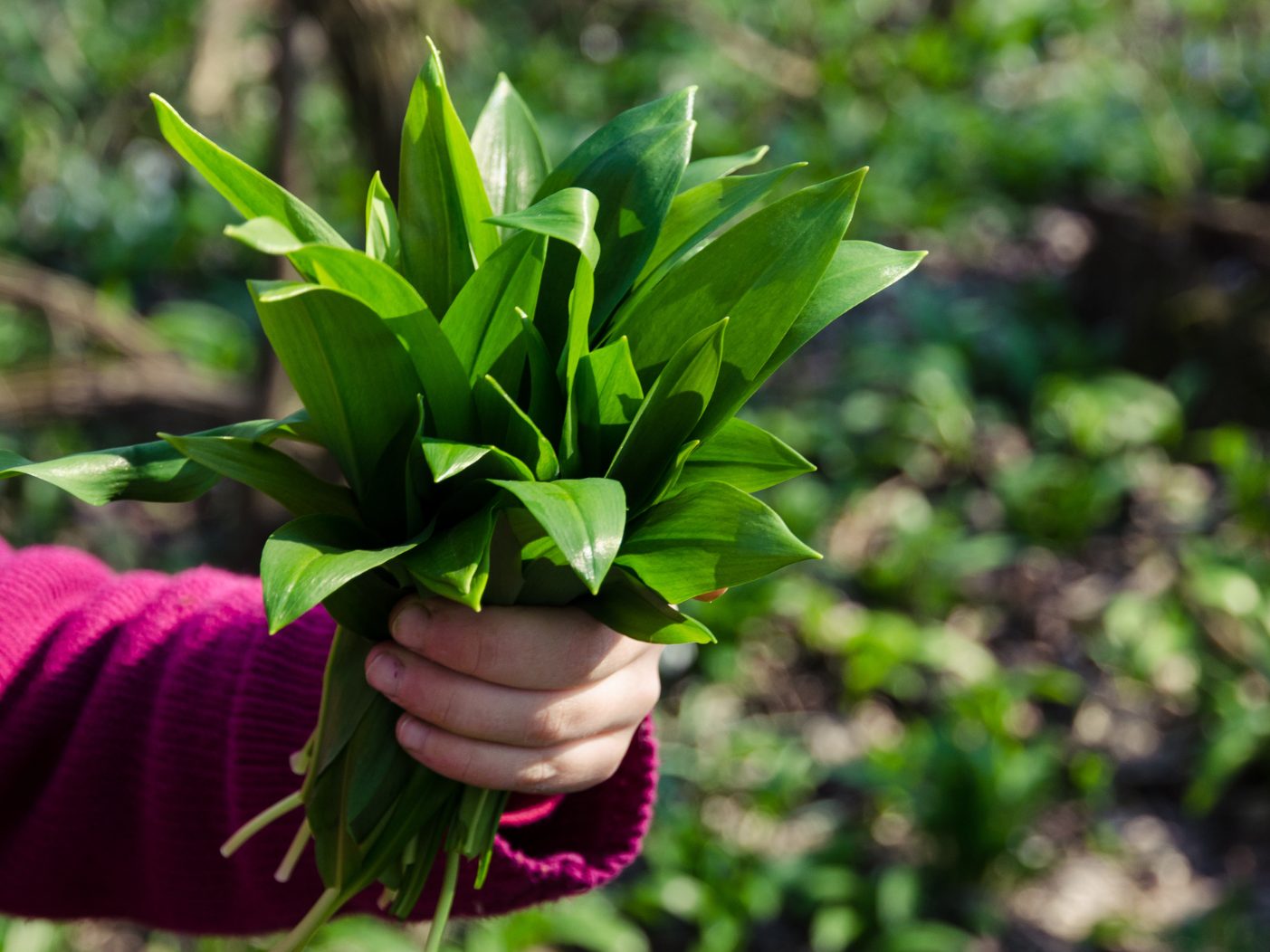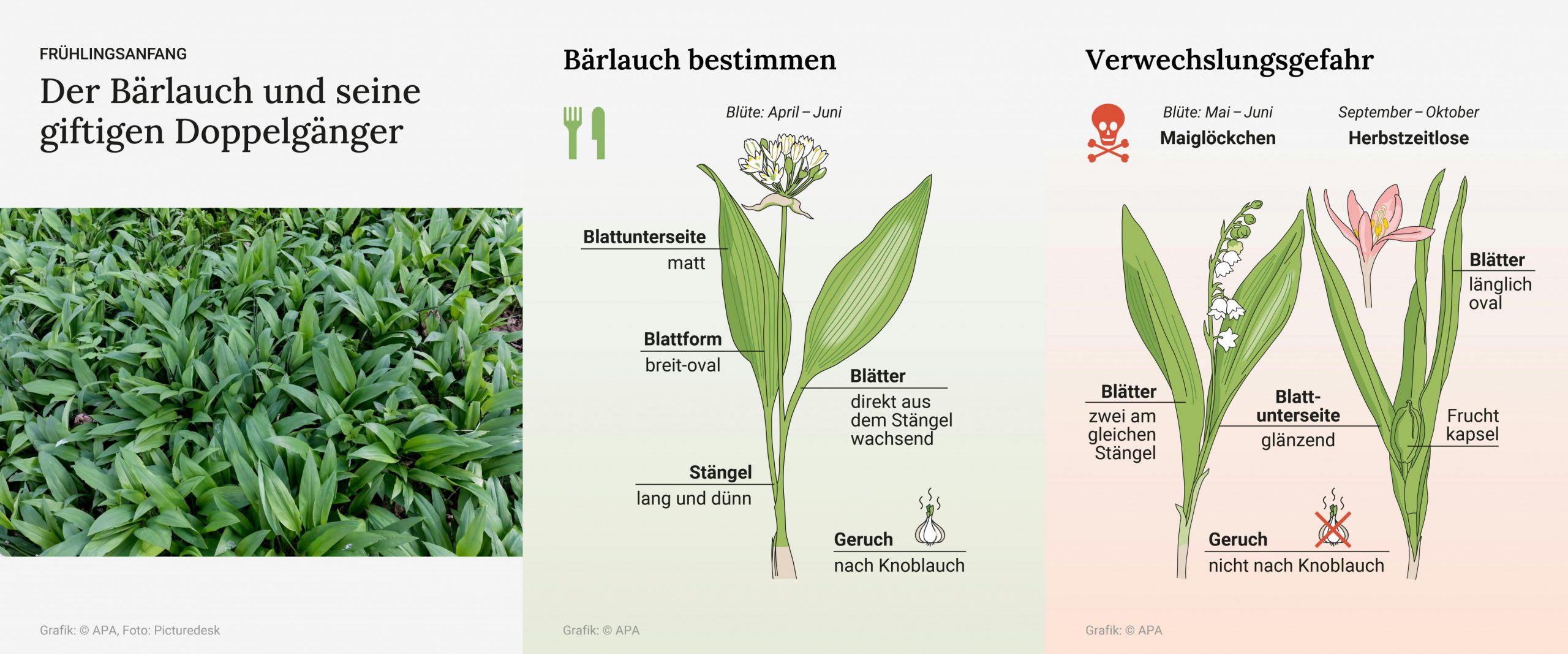```html
Wild Garlic or Poisonous Plant? How to Tell the Difference
```

Wild garlic is one of the first signs of spring, its scent already noticeable to walkers in parks and forests. Its leaves are not only tasty, but they are also used as a remedy for atherosclerosis and high blood pressure, as well as for "detoxification." However, the plant looks confusingly similar to lily of the valley and autumn crocus, which can be fatal.
The pungent garlic scent is unique and can be perceived from several meters away, but the external appearance can be deceiving. The most important characteristic of wild garlic: Its leaves sprout individually from the ground and are clearly divided into a lance-like leaf surface and a thin leaf stalk. When torn, the juice smells strongly of garlic.
Wild Garlic Often Appears Simultaneously with Autumn Crocus
However, wild garlic often appears simultaneously with the deadly poisonous autumn crocus (Colchicum autumnale). Its leaves are narrow-elongated, sit on the stem without a stalk, and sprout in clusters from the ground. The younger ones are surrounded by the older shoots. The juice of the autumn crocus is odorless. If you have previously collected wild garlic, the juice sticking to your hands can, however, simulate a garlic scent during a check.
Just three to four leaves of the autumn crocus can be fatal. The cell poison contained in the plant - colchicine - only takes effect after several hours. The first symptoms of poisoning appear in the form of nausea and vomiting. This is followed by diarrhea, intestinal, blood, and bone marrow cells are destroyed, which can lead to death after about two days.
Also Confusions with Lily of the Valley
Confusions with Lily of the Valley (Convallaria majalis) usually do not have such severe consequences: Toxic for humans are glycosides, which can cause heart rhythm disturbances. However, these are poorly absorbed by the intestines and quickly excreted by the kidneys. Life-threatening poisonings are rare. The plant usually grows in pairs, with older leaves encircling the younger ones.
The leaves of the poisonous garden tulip (Tulipa hybrids), which occasionally becomes wild, can also cause a fatal confusion. The flowering plant, if it does not bloom, only forms a single leaf that resembles wild garlic. It contains tulipin, which has a similar effect to the colchicine of the autumn crocus. As soon as 15 minutes after consumption, it can lead to nausea, vomiting, abdominal pain, and diarrhea. Severe poisonings eventually lead to shock, apathy, and in the worst case, death due to respiratory arrest.

Wild Garlic Grows in Shady, Humus-Rich Floodplains and River Forests
Wild garlic grows in shady, humus-rich floodplains and river forests with particularly high nutrients. In the Alps, the 15 to 30 centimeter long leaves and stems can be found at altitudes of up to 1,700 meters. In the kitchen, only young leaves are used before flowering. Since the "wild garlic" only grows in large quantities locally, only one or two leaves should be picked and the bulb should remain buried.
The garlic-like taste of wild garlic is milder than garden garlic and, when consumed in moderate amounts, does not cause an unpleasant odor. Fresh leaves are best used for seasoning. Wild garlic should generally not be cooked, but mixed raw into hot dishes - such as soups, sauces, and vegetables - or used as a salad. The plant is not only healthy for humans: Bears are also said to seek out the herb after hibernation to cleanse their stomach, intestines, and blood.
(APA/Red)
This article has been automatically translated, read the original article here.





